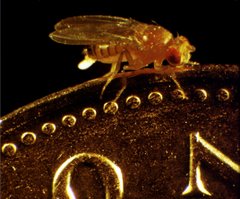 Now this is the kind of science we should be supporting more of! According to Seed Magazine, Robert MacPherson, a mathematician at the Institute for Advanced Study in Princeton, New Jersey, and David Srolovitz, a physicist at Yeshiva University, New York have discovered why some beers holds their head and others do not.
Now this is the kind of science we should be supporting more of! According to Seed Magazine, Robert MacPherson, a mathematician at the Institute for Advanced Study in Princeton, New Jersey, and David Srolovitz, a physicist at Yeshiva University, New York have discovered why some beers holds their head and others do not.Surprisingly, the degree to which a beer holds its head is not directly correlated to the blood alcohol content of the beer's dispenser, as I had always suspected. But, according to Seed Magazine:
"Beer foam is a microstructure with complex interfaces. In other words: a cellular structure comprising networks of gas-filled bubbles separated by liquid.
The walls of these bubbles move as a result of surface tension—and the speed at which they move is related to the curvature of the bubbles. As a result of this movement, the bubbles merge and the structure coarsens,” meaning that the foam settles and eventually disappears."
Ostensibly, the difference in Lager and Stout, aside from the obvious differences in taste, lies in variations created either by the liquid surrounding the bubbles or by the gas filling the bubbles. My money's on the gas since I know (from meticulous pub-based research) that Guinness taps require a nitrogen source and other beer taps just require regular carbon dioxide.
On a related note, just to show you the difference between Nature, where MacPherson and Srolovitz's work was published yesterday and Seed Magazine where I just read about their paper, I saw the citation below on my weekly email table of contents from Nature and thought, "Yawn, who cares about von Neuman relations and microstructures." Of course I failed to read the last line in the summary. Contrast that with Seed's catchy headline, "Head Start: Scientists Crack Beer-Froth Enigma," all I can say is "thank God for science writers, Nature should consider hiring some!"
To recap:
Guiness and Budweiser are inherently different
Boring:
"The von Neumann relation generalized to coarsening of three-dimensional microstructures"
(Nature Volume 446 Number 7139 p1053)
Over 50 years ago, von Neumann derived an exact formula for the growth rate of a cell in a two-dimensional cellular structure. Now the extension of this result into three (and higher) dimensions has been found. The formula could lead to predictive models for various industrial and commercial processing scenarios, such as controlling the head on a pint of beer.
Robert D. MacPherson and David J. Srolovitz
Cool:



